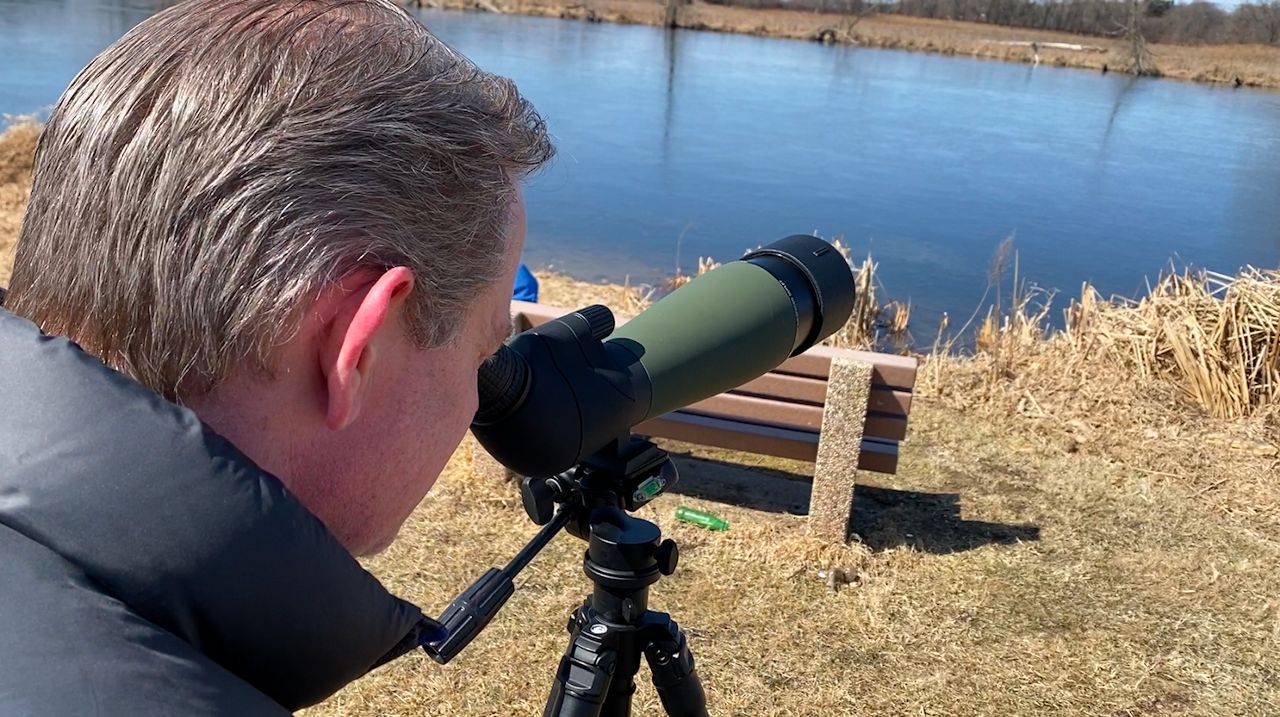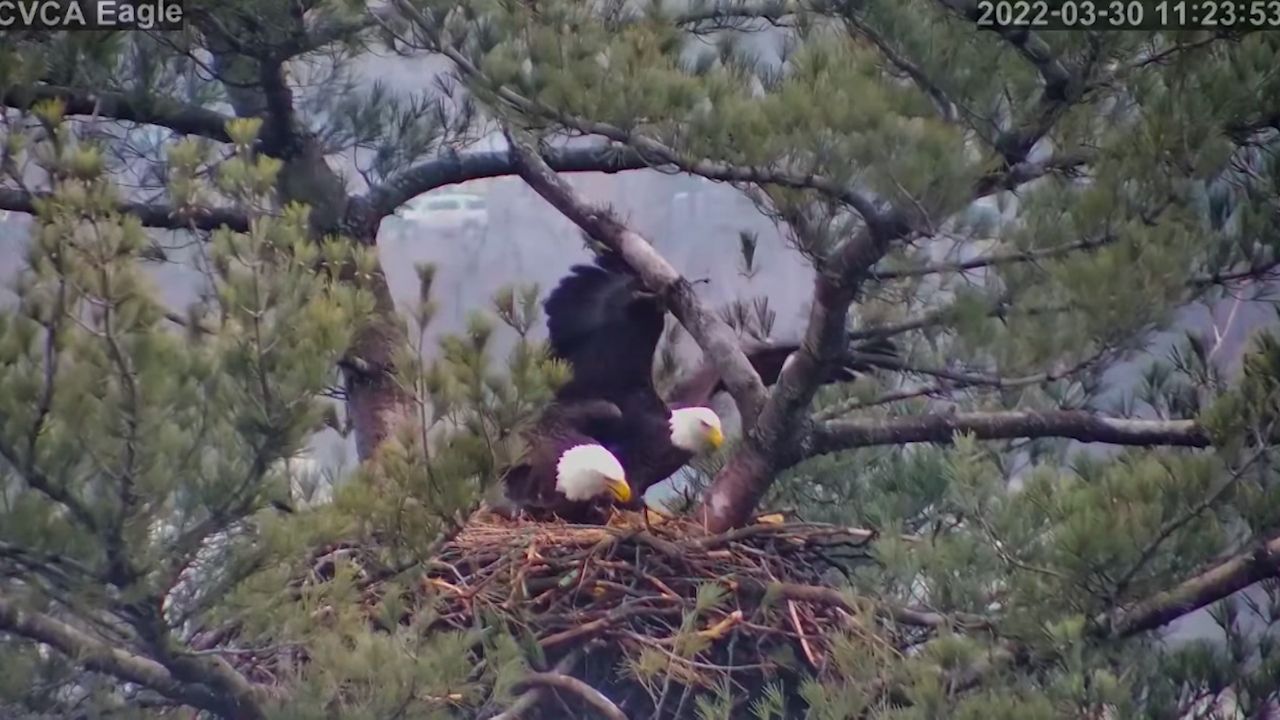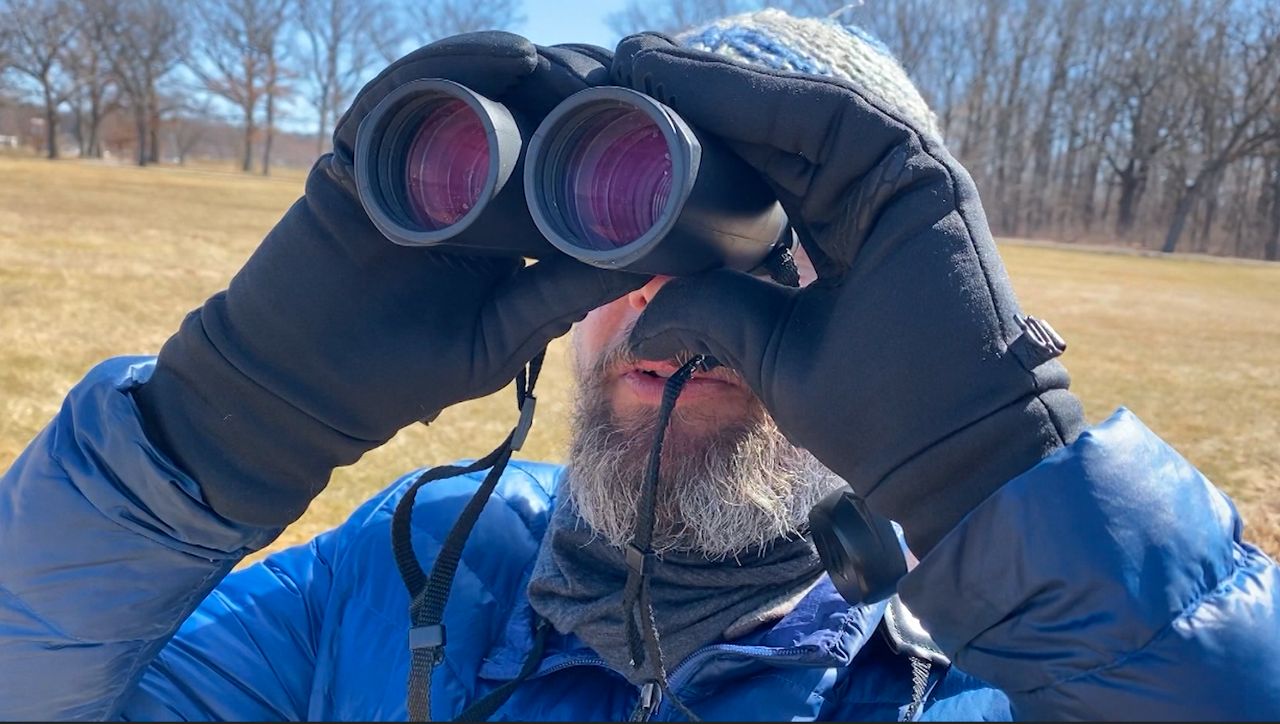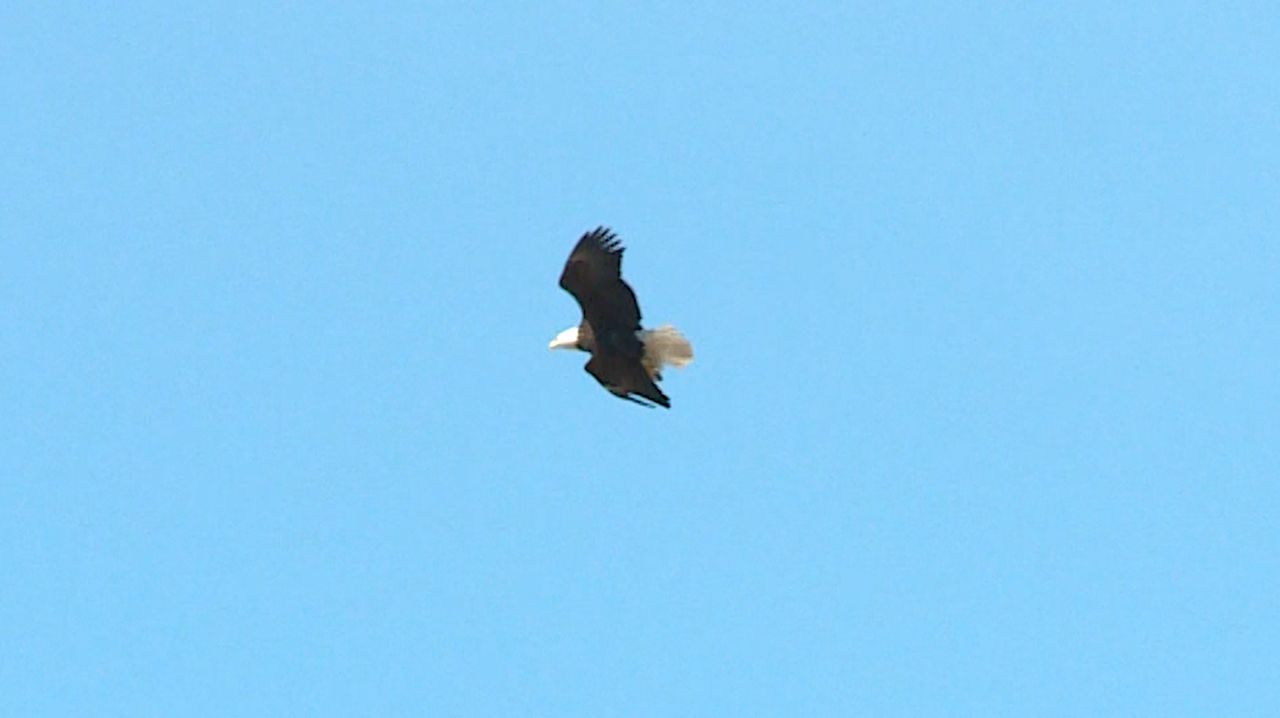MADISON, Wis.— After near extinction decades ago, the bald eagle is once again stretching its wings across the state of Wisconsin.
An eagle soaring through the sky in Madison would have been a rare sight a few decades ago. Now, a pair of eagles have decided to nest in Warner Park.
Drew Cashman of the Madison Audubon started the Bald Eagle Nest Watch to collect data on the birds, and hopefully, their young.
“This one is incubating either eggs or eaglets,” said Cashman on a recent visit to Warner Park.
From February to June, Cashman and almost 300 volunteers monitor nests and share their data with the Wisconsin Department of Natural Resources.
“We’re supporting them, providing them a year of data on what’s going on at the nests,” explained Cashman. “We start in February and go all the way to fledge, usually around May or June.”

In the past, the DNR conducted two airplane surveys each year to monitor eagle nests. They welcomed the chance to work with Nest Watchers, who spend an hour collecting data each time they visit a site.
“They see it through the whole nesting cycle so they can give us great information on if they’re productive and how many young are fledged,” said Richard Staffen, a Wisconsin DNR conservation biologist and zoologist. “Probably even more information than we were ever able to collect in two flight surveys.”

Last year near the Heyde Center for the Arts in Chippewa Falls, a pair of eagles showed up and built a nest. They raised eaglets last year and may have more on the way. A 24-hour webcam set up by volunteers allows anyone to check on the progress.
In 1970 there were only 82 observed nesting pairs in the state.
In 2019, that number reached 1,700.
The rising eagle population is bringing the once-endangered birds into more populated areas.
“Eagles are tremendously tolerable of people,” said Staffen. “They’re starting to pop up around Madison, but for one to be right in the city like this in a park is super cool.”

Eagle observers recently spotted a nesting pair in Milwaukee County.
“It now gives us nests in all 72 counties in Wisconsin, which is awesome,” said Staffen.
It’s been a long time coming.
“Fingers crossed. If everything goes well, we’ll have our first fledgling in Milwaukee County in almost 50 years.”
Even with eagle populations looking strong, Cashman warned some threats still exist.
“Lead is the number one thing," said Cashman. "If we can remove it from the environment, lead shot, lead weights from fish tackle, you would see even bigger growth.”

Car strikes pose another threat to eagles.
“The biggest cause of mortality is getting hit by cars,” said Staffen. “Usually, they feed on the side of the road in the wintertime on a deer carcass or something. They don’t have enough time to get up when they’re flushed.”
Another more recent threat, avian influenza, may pose a risk to the population as well.
“Raptors and bald eagles included seem to be particularly susceptible to it so there’s major concern about how it might impact our bald eagle population,” said Staffen.
Despite these obstacles, Staffen and Cashman said the state of eagles in Wisconsin remains positive.



